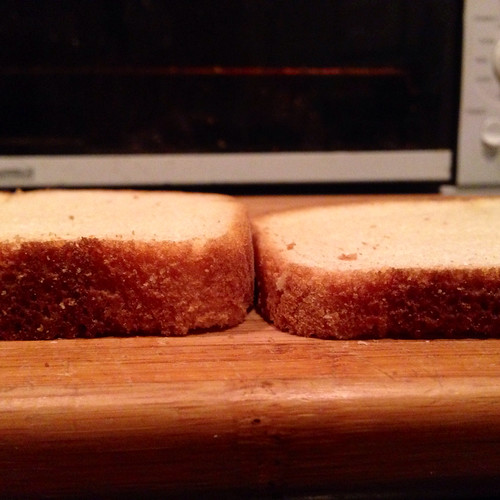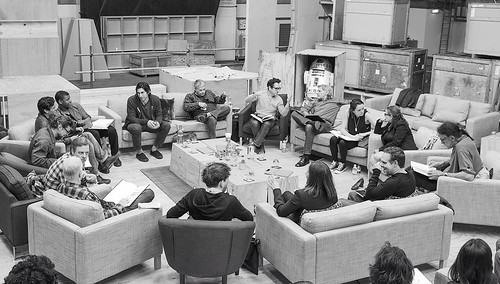In particular, I want to talk about my Boba Fett fan theory, prompted by Chuck Wendig's Star Wars: Aftermath. Wendig himself liked it on Twitter, which can only mean one of three things: 1) I am absolutely correct, 2) I am so wrong he thinks it's funny, or 3) he doesn't know what's going on with Boba Fett either but likes the cut of my jib.
Spoilers for one isolated interlude from Aftermath; no spoilers for The Force Awakens.
Last we saw Boba in-canon, he was getting swallowed by the Sarlacc. (He had a whole subsequent history in the Expanded Universe, but that has all been flushed away.) We don't see him in Aftermath (probably), but we do see his armor, salvaged by a band of Jawas from the wreck of Jabba's sail barge:
...a helmet. Pitted and pocked, as if with some kind of acid. But still—he raps his knuckles on it. The Mandalorians knew how to make armor, didn't they? "Look at this," he says, holding it up. "Mandalorian battle armor. Whole box. Complete set, by the looks of it. Been through hell and back."The armor winds up with a local Tatooine sheriff named Cobb Vanth (sometimes Vance). When I first read the scene, I thought Vanth might be Boba Fett himself, incognito; he is certainly badass enough, and quick on the draw. But that seems unlikely; Vanth appears to have been on Tatooine for a long time, long enough to establish a working relationship with these Jawas, and Aftermath is set only three months after Jedi. But if the armor isn't in the belly of the Sarlacc, that implies it came back up out of the pit somehow. And if the armor came up then the dude inside it probably did as well. Let's assume Boba Fett is alive on Tatooine, but without his armor.
So who is Cobb Vanth? Here's how he's introduced:
[He] glances back, sees a man standing there. Angular fellow. Leathery skin. Pinched eyes. Amused smile.Does that remind you of anyone? Okay, probably not. But what if I remind you that Boba Fett was originally based on Clint Eastwood's Man with No Name from Sergio Leone's Dollar Trilogy? He even had a serape in the original art and initial screen test:
Okay, now does someone with an angular face, pinched eyes, and an amused smile pop into your head? Someone like...
Yes! If Boba Fett is Clint Eastwood, Cobb Vanth is Lee Van Cleef! He's even got "Van" right in his name!
Now imagine Van Cleef/Vanth has gotten his hands on Clint's/Boba Fett's armor. Imagine Boba Fett, wounded after his ordeal with the Sarlacc, nursed back to health by some young Tatooine widow, hunting down this small-town sheriff who's stolen his armor. Imagine a spaghetti western in the Star Wars universe, inspired by the classic rivalry between the Man with No Name and Angel Eyes, but with the morality flipped. Now remember that there's a Boba Fett spinoff movie in the pipeline....



